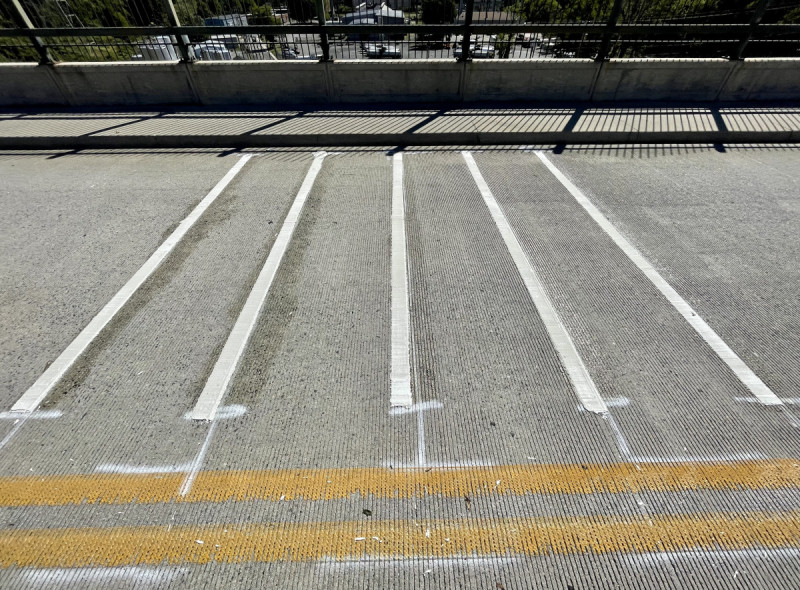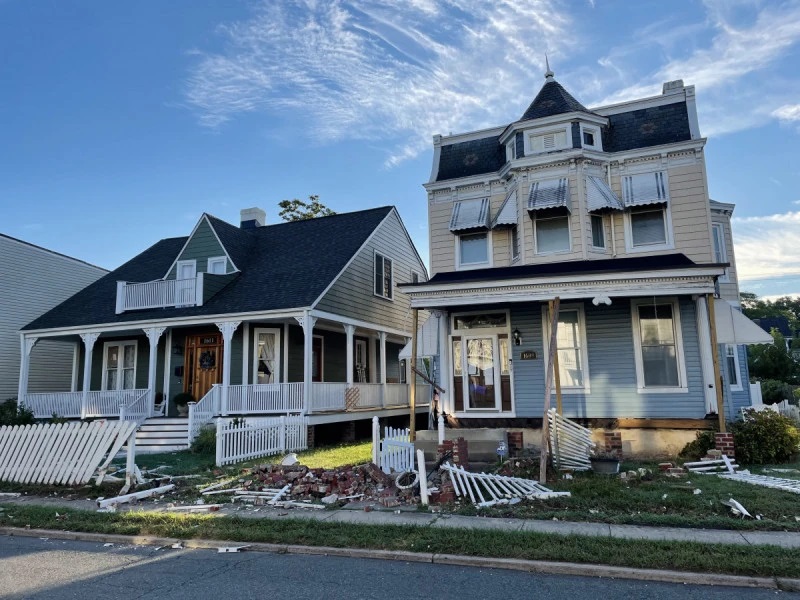Editor's note: this article originally appeared on Greater Greater Washington and is republished with permission.
Most people ring in the new year with a glass of champagne and perhaps even a kiss at midnight for good luck. Richmond resident (and my neighbor) Marilyn Joyner started her 2022 in a far worse fashion — with a driver slamming his sedan into the side of her home in the wee hours of the morning.
If that had been the only crash she had to deal with this year, Joyner may still have considered herself lucky. After a second driver plowed into her house last month, she is desperate for new infrastructure to protect her home, furious that no one from the city will respond, and considering leaving the property she has lived in for the last 23 years.
A legacy of loss
Joyner is unfortunately not alone, not just in Richmond, but nationally. As we’ve covered before, US drivers collide with buildings 100 times a day, with an average of 16,000 people injured over the course of a year. In 2021, Washington, DC’s H Street corridor was the site of three such incidents over a period of three months.
When Joyner first bought her home in Southern Barton Heights in 1999, drivers crossing the 1st Street Bridge from Gilpin Court used to have to stop before coming around the corner where the road changes to Monteiro Street. Some years later, the City of Richmond closed the small side street that connected to Monteiro at the end of the bridge and removed the stop sign. That’s when the crashes began.

Fifteen years ago, Joyner’s house was pastel pink. After the first driver collided with her home, Joyner’s insurance covered it and she repaired the damage with blue siding around the ground level. However, the claim proved so expensive that her insurance company terminated her coverage after that.
That initial crash was unfortunately just the first in a pattern of dangerous driving that has cost Joyner over $100,000 in property damages over the years. Drivers have totaled two vehicles she parked outside her home, destroyed her front fence five times, and caused her to lose her insurance coverage twice. “Eventually I started to just pay for the damages out of my own pocket so my insurance wouldn’t keep going up and I would get dropped again,” explained Joyner.
Neighboring residents are dealing with similar damage from drivers. Last August someone lost control and rammed their SUV into four parked cars across the street before ultimately landing on the stoop of the fourplex across from Joyner’s home.
Next door, homeowner Michael Beiro has also dealt with shattered windows, damage to his porch, and even possible foundation problems resulting from the two crashes so far this year. So far, his insurance has covered the cost of the crashes, but he has no idea how much his premiums will rise next year as a result of all the claims. While the cost of the damages can be quantified, the emotional toll of the crashes is incalculable.
“The night of this last crash my wife had panic attacks,” said Beiro. “No one wants to sit on the front porch anymore because they’re scared about every single vehicle that comes by. When we first bought this house we thought we would spend our whole lives here, and now there’s doubt about how safe this home really is for our family, and it’s just not clear if living here is what’s best for our family in the long term anymore.”
My yard and fence are trashed, a 100 year old window is broken, and my neighbor's and my nerves are frayed. My street is not a damn speedway. https://t.co/no3eBtVLtv
— Michael Beiro (@Miqi95x) September 14, 2022
The nightmare is far from over for Joyner who has struggled to find contractors to take on the work of repairing her home. Since the crash, she has also been in and out of court fighting with the city over building permits, the structural stability of her currently damaged home, and the potential loss of historic tax abatements due to the needed repair work. Joyner still hasn’t received a police report on the September crash either.
We can infrastructure our way out of this
After the wave of news coverage following the September crash into Joyner’s home, the city’s Department of Public Works repainted the yellow lines on the First Street Bridge and added in two sets of “rumble strips” of white paint to warn drivers to pay attention ahead of the curve. Joyner is not impressed.
“The rumble strips are not enough, and they are in the middle of the bridge,” she said. “Why aren’t they closer to the end of the bridge? Why aren’t there any speed humps on my block?”

When Joyner requested speed humps be installed in the wake of the recent crash, city officials told her she would have to go to the General Assembly to get permission for such an infrastructure improvement as the First Street Bridge is a key connection in the city used by emergency vehicles. Both Joyner and Beiro call BS.
“I understand the consideration about speed humps being bad for buses and emergency response vehicles but they already drive over them on North Avenue further up the road,” said Beiro. “There are speed humps in Northern Barton Heights and Ginter Park. The difference is those areas are all more well-off than this less affluent and rapidly gentrifying neighborhood we live in.”
“Why can they have speed humps on that busy street and we can’t?” questioned Joyner.
DPW previously promised to continue exploring “additional road enhancements;” however, Joyner says neither Councilwoman Ellen Robertson who represents her, the Mayor, or Bobby Vincent — who heads DPW — will respond to her calls. All three offices either declined to comment or did not respond to interview requests for this story.
Although city officials seem unsure of or uninterested in what other infrastructure improvements could be undertaken to protect Joyner, Beiro, and their neighbors, the injured parties are full of ideas.
“The rumble strips are just another band aid,” said Joyner. “People don’t even pay no attention to them and still speed right around that curve. The guardrail should come further and they should put red blinking lights and speed humps right in front of my house.”
Beyond just smaller infrastructure improvements around the site of the crashes, Beiro wants the city to rethink the whole design of the bridge that signals to drivers it’s ok to go 45 mph in a 25 mph zone.
“The lanes on the First Street Bridge are actually wider than they are on Interstate 64,” Beiro said. “The city could easily put in bulb-outs, a median, or bike lanes to narrow the bridge. It’s built and drives like a highway so people treat it like a highway because it’s instinctive.”
Until more is done to discourage drivers from speeding in the area, Joyner will keep considering whether or not to leave the place she has called home for 23 years for somewhere safer: “This last crash has emotionally upset me. I’m afraid. Just as I had gotten over the December crash this one happened. I’m fearful a big truck is gonna come around that curve and crash into my house one day.”
Wyatt Gordon is a correspondent for the Virginia Mercury via a grant from the Coalition for Smarter Growth and the Piedmont Environmental Council. He is also a policy manager for land use and transportation at the Virginia Conservation Network. He's a born-and-raised Richmonder with a master's in Urban Planning from the University of Hawai‘i at M?noa and a bachelor's in International Political Economy from American University. He's written for the Times of India, Nairobi News, Style Weekly, GGWash, and RVA Magazine.







